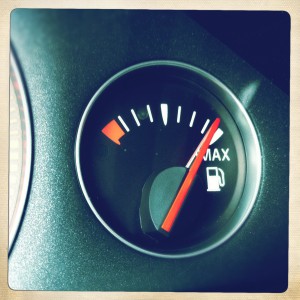Yesterday afternoon, just when I was about to post this piece, I found out that tragedy had struck the Boston Marathon. I have always loved this race having grown up in the area and had spent the morning glued to the television watching race coverage with my boys. I still cannot believe that something so beautiful, and joyful has been spoiled for thousands of people in such a senseless way. Marathoners and Bostonians have a lot in common; we are tough, proud and don’t believe in the word can’t. I have no doubt that the city of Boston and the Boston Marathon will come back stronger than ever after this. I have decided to go forward and post what I wrote yesterday while thinking of those runners on the Boston Marathon course. I’m guessing that there might be even more people now inspired to run a full marathon in the wake of the tragedy yesterday. My heart goes out to everyone affected by this senseless act.
When it comes to nutrition before a big endurance event, there is a lot of room for confusion, nerves and second guessing. You’ve been training for many weeks/months. You’ve nailed all of your long runs, hill repeats and tempo runs (or century rides, hour plus swims and brick workouts). You’ve been right on top of your nutrition, making sure to fuel your body while it’s been working so hard. Seemingly out of the blue it’s taper time, with more time to think (read worry) you start second-guessing everything you do, including what to eat.
During the taper, it’s more important than ever to consume nutrient dense foods. Since you are decreasing your training time, you will need slightly less in terms of calories, but at the same time you want to support your body’s ability to repair and heal. Pack your plate with lots of colorful vegetables since they are naturally lower in calories and high in nutrients and phytochemicals. Make the majority of your grains whole grains and spread high quality protein throughout the day. If ever there was a time to become careful about what you eat, it’s now!
As the last few days prior to your event approach, it’s time to start thinking about carbohydrates. There have been numerous studies showing the benefits of carbohydrate loading prior to endurance events. How do you load? Many people think a big plate of pasta the night before is all it takes, but it’s a little more involved than that. For the last 2-3 days before race day, the percentage of carbohydrates (compared to fat and protein) should increase and become the majority of your diet. It’s especially important to have a high carbohydrate meal following your last few workouts because this is when your muscles will be primed for storage.
The entire day before the event will be focused on getting in lots of carbohydrates; this will take some planning because it’s not as easy as it sounds! The research shows that about 10g of carbohydrates per 1 kg of bodyweight, is most effective; for a 150-pound person, that would be about 680 grams or 2720 calories of carbohydrate in one day! Consuming high carbohydrate beverages (such as juices and sports drinks) throughout the day, and choosing lower fiber foods such as potatoes, bananas, pretzels, and white rice instead of higher fiber vegetables, fruits and grains will also help because you don’t want to load up your GI with fiber the day before your big event.
If you load correctly, you will gain about 3-4 pounds and feel very bloated and sluggish. This is due to water being retained along with the glycogen in your muscle tissue and will diminish once you begin to utilize all of this stored energy. Just remember, one day of carbohydrate loading cannot make up for poor nutrition during your training; feed your body well and it will reward you!
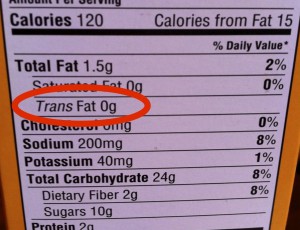


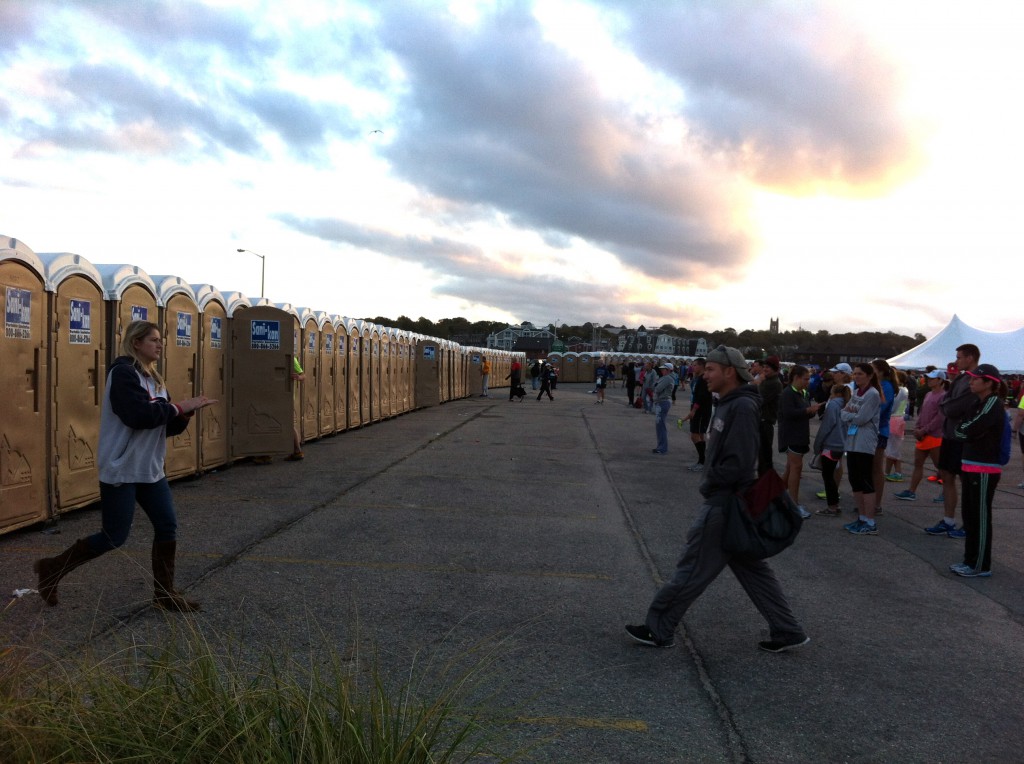
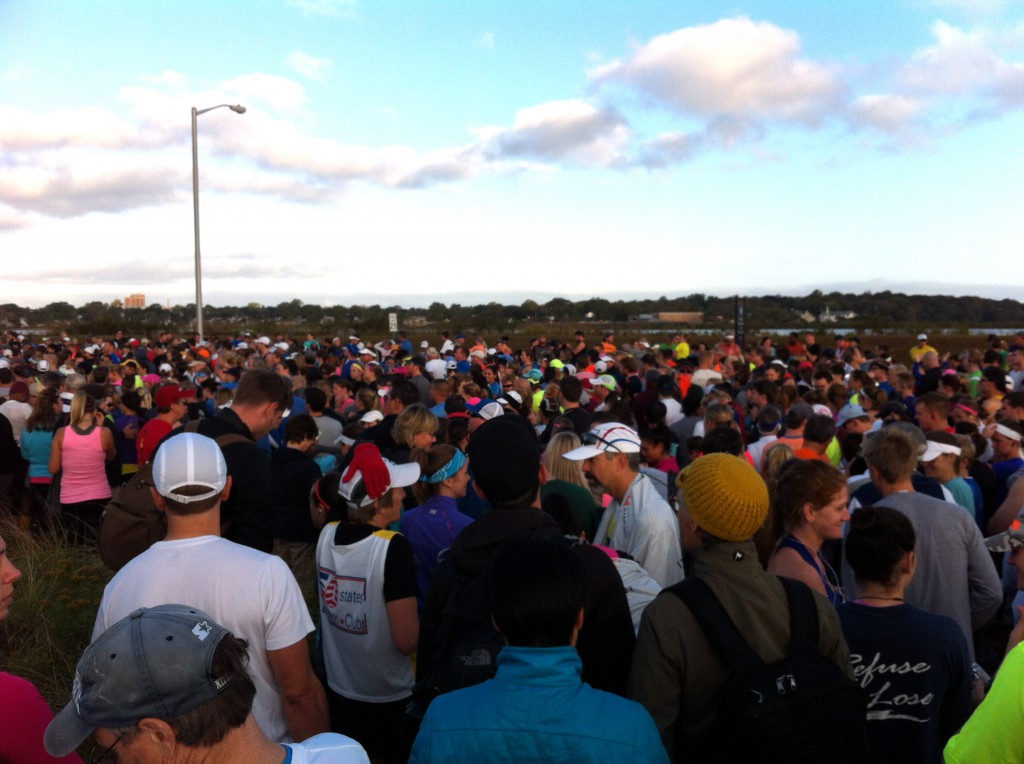
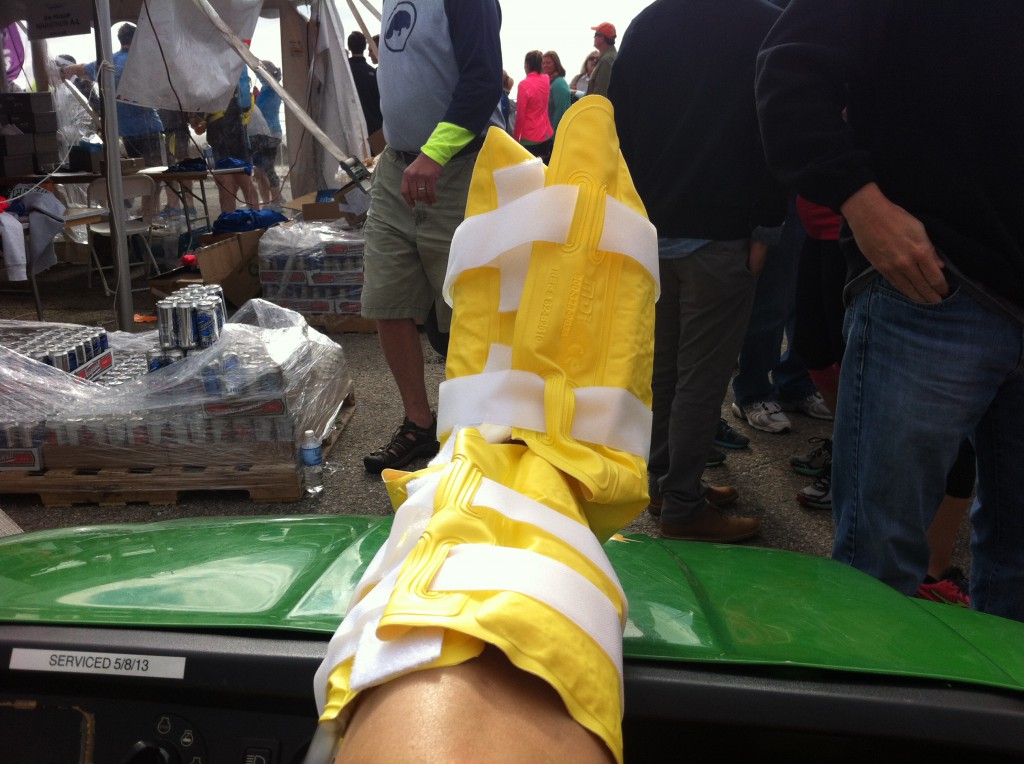
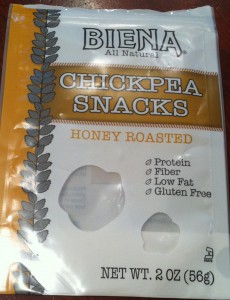
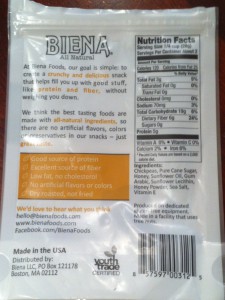
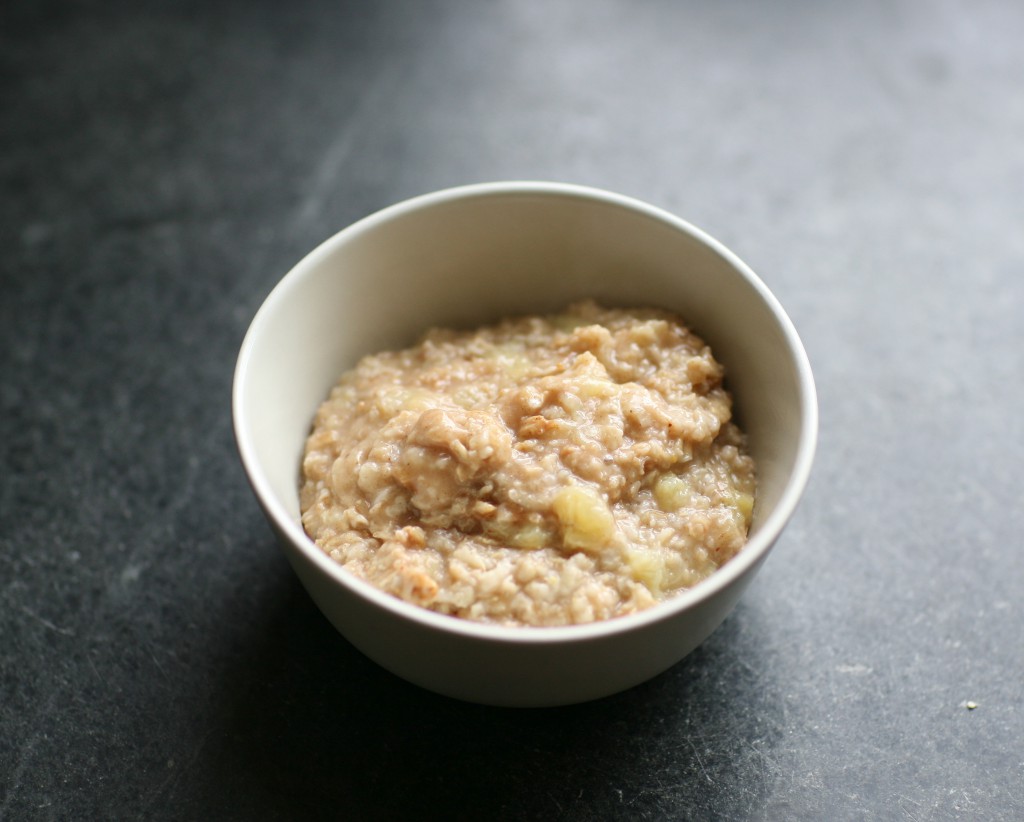

 You may have seen, heard or read about Michael Moss and his book recently in one of many places. The New York Times, the Daily Show, NPR, The Boston Globe, The Huffington Post and many others have interviewed Michael Moss and/or reviewed his book. Salt Sugar Fat is a bit of an expose about the food industry and how they are engineering their foods to be simply irresistible. After reading books like
You may have seen, heard or read about Michael Moss and his book recently in one of many places. The New York Times, the Daily Show, NPR, The Boston Globe, The Huffington Post and many others have interviewed Michael Moss and/or reviewed his book. Salt Sugar Fat is a bit of an expose about the food industry and how they are engineering their foods to be simply irresistible. After reading books like  The other book I’ve been reading this week is
The other book I’ve been reading this week is 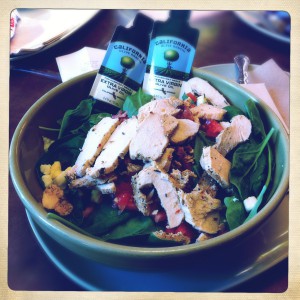 I thought it was a nice touch that the olive oil was given on the side in little packets. It was actually a pretty nice salad and the ingredients were fresh, although I’d like to see more lettuce and tomato. When I got home, I was able to look up all of the information about the hidden menu online. Here’s what it said:“All of these meal selections are an excellent source of protein and contain limited processed carbs. But you won’t find these items on banners in our cafes, or even on the menu board.”
I thought it was a nice touch that the olive oil was given on the side in little packets. It was actually a pretty nice salad and the ingredients were fresh, although I’d like to see more lettuce and tomato. When I got home, I was able to look up all of the information about the hidden menu online. Here’s what it said:“All of these meal selections are an excellent source of protein and contain limited processed carbs. But you won’t find these items on banners in our cafes, or even on the menu board.” Summer’s finally here! For many of us that means a big change in our daily schedules. For those of us with children, they are out of school and may be home with us or off to camp for part of the day. Our roles may become that of cruise director and outing planner, and you had better get a supply of popsicles in the freezer for those hot humid days! If you don’t have children things can still become topsy turvy in the summer; friends want to go out for drinks after work in the still-light summer hours. It’s the perfect time for long hours of socializing with friends over drinks on the patio or by the pool. Summer is also the time that many of us go on vacation, which means eating out for most meals and not keeping to your usual exercise routine.
Summer’s finally here! For many of us that means a big change in our daily schedules. For those of us with children, they are out of school and may be home with us or off to camp for part of the day. Our roles may become that of cruise director and outing planner, and you had better get a supply of popsicles in the freezer for those hot humid days! If you don’t have children things can still become topsy turvy in the summer; friends want to go out for drinks after work in the still-light summer hours. It’s the perfect time for long hours of socializing with friends over drinks on the patio or by the pool. Summer is also the time that many of us go on vacation, which means eating out for most meals and not keeping to your usual exercise routine.
 The weather was wet and cold for the weekend and I even ran out and bought a jacket the night before since I had packed for the forecasted 60 degree temperatures (not the 40′s!). Checking the race organizers page the day before, I saw that there was a last minute change in the route due to some issues with a culvert that is being repaired by the Army Corps of Engineers. Then on race morning, the start time got pushed back by 15 minutes and I started to ask myself if these weren’t all signs that it just wasn’t going to go well? Regardless of the signs, I decided to follow my plan of keeping a steady 9 min/mile pace and hope for the best.
The weather was wet and cold for the weekend and I even ran out and bought a jacket the night before since I had packed for the forecasted 60 degree temperatures (not the 40′s!). Checking the race organizers page the day before, I saw that there was a last minute change in the route due to some issues with a culvert that is being repaired by the Army Corps of Engineers. Then on race morning, the start time got pushed back by 15 minutes and I started to ask myself if these weren’t all signs that it just wasn’t going to go well? Regardless of the signs, I decided to follow my plan of keeping a steady 9 min/mile pace and hope for the best.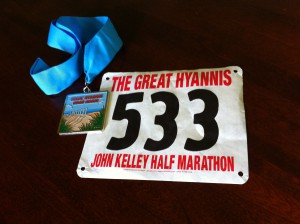 I found out later that day that my official time was 1:57:36, exactly 4 minutes faster than my PR of 2:01:36 from last year! I now feel confident as I start the training cycle for my next full marathon, I’ll be running the
I found out later that day that my official time was 1:57:36, exactly 4 minutes faster than my PR of 2:01:36 from last year! I now feel confident as I start the training cycle for my next full marathon, I’ll be running the 
